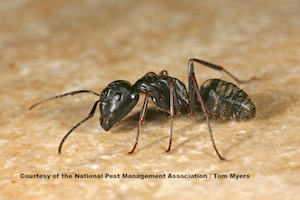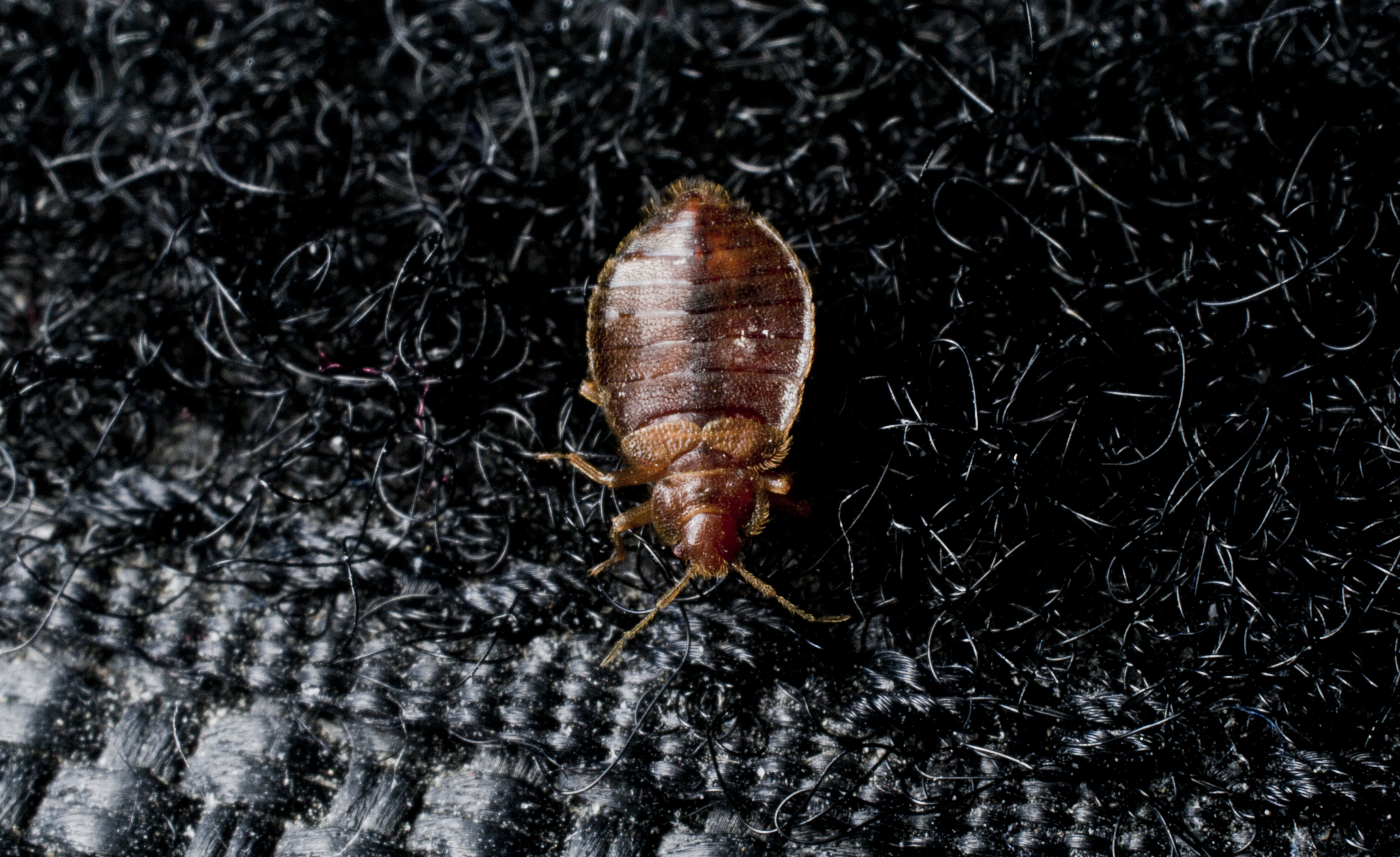What kind of bug is THAT?
Identifying your occasional pest infestation
Have you ever seen a bug scurrying across your kitchen floor or under a baseboard and thought, “What in the world is that?” It’s clearly not a “common” pest like, say, a cockroach or spider. It’s something… different. If you’ve ever had this experience, the pest in question likely falls in a category we call “occasional invaders.”
As their name implies, occasional invaders are pests that may find their way into our homes but are not as common as frequent household pests, such as ants, rodents or termites.
Some occasional invaders pose more serious threats than others. To determine the risk to your family, you will need to identify the species. A trained pest control professional will be able to properly identify a pest species and its threats, but you can also use this guide to do your best at determining what may be lurking within your home:
Boxelder Bugs

- What to look for: Boxelder bugs are black with distinct reddish or orange markings on their dorsum and have an elongated, somewhat flattened shape.
- Where you’re likely to spot them: These bugs get their common name from the fact that they are often found on and around boxelder trees. These occasional invaders congregate on the south sides of buildings, where the sun hits, and may migrate indoors during the fall. You might see them in small cracks and crevices in walls. They’ll reemerge in the spring.
- Watch out for: Boxelder bugs are not known to bite, but their piercing-sucking mouthparts can occasionally puncture skin, producing a red spot similar to a mosquito bite. When crushed, boxelder bugs may leave a reddish-orange stain from their fecal material that can result in discoloration of curtains, drapes, clothing, etc.
Centipedes

- What to look for: Centipedes are sometimes called "hundred-leggers" because of their many pairs of legs. They are yellowish to dark brown with darker stripes.
- Where you’re likely to spot them: Centipedes are typically found in areas of high moisture. Indoors, this means they hang out in damp basements, crawlspaces, bathrooms, or potted plants.
- Watch out for: House centipedes have poison jaws with which they inject venom into their prey. Some larger species can inflict a painful bite that can break human skin and causes pain and swelling, similar to a bee sting, if handled roughly.
Millipedes

- What to look for: Millipedes are often confused with centipedes, but tend to have a more “wormlike” appearance. They are sometimes called “thousand-leggers” and are blackish or brownish, sometimes with red or orange patterns.
- Where you’re likely to spot them: Most millipedes are nocturnal. They are typically found in areas of high moisture and decaying vegetation, such as under trash, in piles of grass clippings or piles of leaves. Millipedes do not usually survive indoors for more than a few days unless there are high moisture conditions and a food supply is present.
- Watch out for: Some millipede species give off a foul-smelling fluid through openings along the sides of the body. Underscoring the importance of millipede control, this fluid can be toxic to small animals and pets, and can cause small blisters on humans.
Earwigs

- What to look for: Earwigs have elongated, flattened bodies and forcep-like cerci that are used to defend themselves and capture prey. They are generally reddish brown to black.
- Where you’re likely to spot them: Earwigs tend to occur in groups. They feed on plants and prefer moist, shady locations.
- Watch out for: Contrary to folklore, earwigs do not crawl into ears at night. They do not spread diseases, but their menacing appearance can be alarming.
House crickets

- What to look for: In the case of house crickets, you’re more likely to hear them before you see them. They are known for their loud chirping which is caused by rubbing their front wings together to attract females.
- Where you’re likely to spot them: House crickets are active at night and usually hide in dark warm places during the day. They are often attracted to electric lights in larger numbers, sometimes by the thousands, and rest on vertical surfaces such as light poles and house walls.
- Watch out for: Crickets can feast on fabrics and carpets, eating large areas, leaving holes and they are especially attracted to clothes soiled with perspiration.
Pillbugs

- What to look for: You may know these dark brown or black bugs as “rollie-pollies,” named for their habit of rolling into a ball when disturbed. They are easily recognized by their back, which is made up of seven hard individual plates.
- Where you’re likely to spot them: Pillbugs are most active at night. They live in moist locations and are usually found under damp objects such as trash, rocks, or decaying vegetation, where they remain hidden during the day to reduce water loss. They sometimes find their way indoors via door thresholds, especially around sliding glass doors. A home invasion typically means there is a large population immediately outside the building.
- Watch out for: Pillbugs cause no damage and are considered a nuisance pest indoors.
Silverfish

- What to look for: Silverfish get their name from their silvery, metallic appearance and fish-like shape and movements. They have no wings, but are able to run very fast.
- Where you’re likely to spot them: Silverfish are typically seen in moist, humid areas in the home, such as bathrooms, basements, and attics. Silverfish can live up to a year without food, but require a high-humidity environment.
- Watch out for: These bugs feed on paper items like wallpaper and books, glue, clothing and foods including flour and rolled oats. They tend to hide their presence from humans, which means any damage they have caused could go unnoticed as well.
If you are concerned about occasional invaders getting in your home, there are some simple steps you can take to help prevent them from gaining access. If you suspect an infestation of an occasional invader pest, work with a licensed pest professional to properly identify the species and determine the best way to treat the problem.

Learn About Ants
Ants are a common pest homeowners struggle to eradicate. Learn more about them!

Bed Bug Pest Guide
Traveling for the holidays this year? Be sure to keep an eye out for bed bugs! Use our Pest Guide to help identify this pest.

NPMA's What Grows There? Project
Check out NPMA's What Grows There? project to learn how pests, such as flies, cockroaches and rodents, can spread germs throughout a home.
Find a PEST PRO in your area

Learn About Ants
Ants are a common pest homeowners struggle to eradicate. Learn more about them!

Bed Bug Pest Guide
Traveling for the holidays this year? Be sure to keep an eye out for bed bugs! Use our Pest Guide to help identify this pest.

NPMA's What Grows There? Project
Check out NPMA's What Grows There? project to learn how pests, such as flies, cockroaches and rodents, can spread germs throughout a home.
